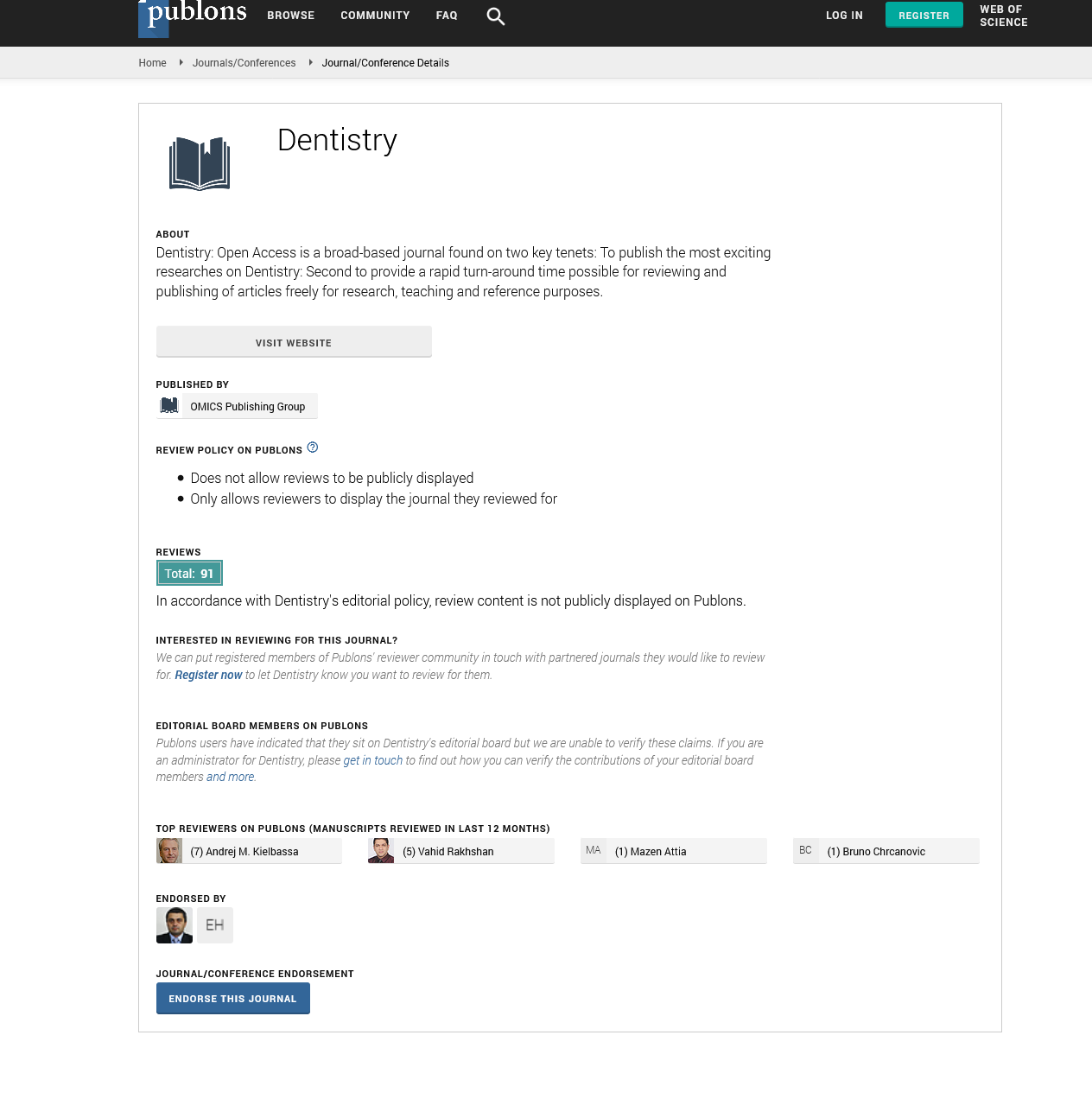Citations : 2345
Dentistry received 2345 citations as per Google Scholar report
Indexed In
- Genamics JournalSeek
- JournalTOCs
- CiteFactor
- Ulrich's Periodicals Directory
- RefSeek
- Hamdard University
- EBSCO A-Z
- Directory of Abstract Indexing for Journals
- OCLC- WorldCat
- Publons
- Geneva Foundation for Medical Education and Research
- Euro Pub
- Google Scholar
Useful Links
Share This Page
Journal Flyer

Open Access Journals
- Agri and Aquaculture
- Biochemistry
- Bioinformatics & Systems Biology
- Business & Management
- Chemistry
- Clinical Sciences
- Engineering
- Food & Nutrition
- General Science
- Genetics & Molecular Biology
- Immunology & Microbiology
- Medical Sciences
- Neuroscience & Psychology
- Nursing & Health Care
- Pharmaceutical Sciences
Abstract
Comparison of Antimicrobial Efficacy of 0.2% Chitosan, 3% Sodium Hypochlorite, 2% Chlorhexidine against Enterococcus faecalis, Alone and in Combination with Diode Laser an In Vitro Study
The aim of this study was to compare the antimicrobial efficacy of 0.2% chitosan, 3% sodium hypochlorite, 2% chlorhexidine against Enterococcus faecalis, alone and in combination with diode laser.
The root canals of 72 extracted intact human single rooted teeth with single canals were prepared and E. faecalis was incubated in the root canals for 7 days. The teeth were then randomly divided into the following 4 experimental groups: Group I: Saline, group II: 0.2% Chitosan, group III: 3% Sodium hypochlorite and group IV: 2% Chlorhexidine. These groups were further subdivided into 3 groups: a) 10 ml irrigant only, b) 10 ml irrigant, dried and irradiation with diode laser, c) diode laser was used for activation of irrigant solution. Samples were obtained from subgroups in each group and checked for turbidity. The effect of each irrigant was evaluated by counting the number of colony forming units observed on inoculation with samples taken from irrigated canal on bile esculin azide agar. The data thus obtained was recorded and put to statistical analysis.
Results: Significant reductions were noted in E. faecalis colony counts in all groups (P<0.05). The greatest reduction in colony count (0%) was noted in the group IV followed by group II. Also, that samples disinfected with diode laser after root canal irrigation showed less number of colony forming units per ml as compared to the samples irrigated with root canal solutions alone or diode laser alone.
Conclusion: Chitosan has the potential to be used as an adjunct for disinfection of the root canal system. Irradiation with diode laser should be used in conjunction with the irrigant so as to obtain maximum antibacterial effect against Enterococcus faecalis.
Published Date: 2024-08-29; Received Date: 2020-08-03

